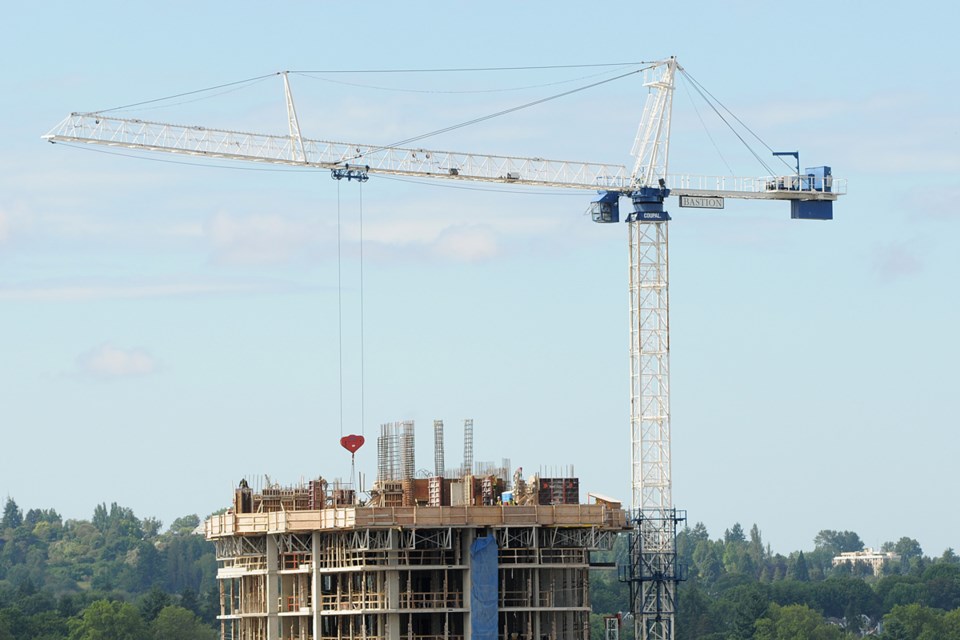Skeptics who predicted Burnaby’s new inclusionary zoning rules would put a chill on development need only look to three new rezoning proposals to allay their concerns, according to the chair of the city’s recently disbanded housing task force.
Coun. Pietro Calendino said the three projects, which all meet or exceed the 20-per-cent-rental mandate, preview a bright future for housing affordability in the city.
“It seems very promising that the direction that the city has taken is not really putting a brake on development,” he said. “It sounds like developers like the new bylaw.”
Initial notice of the proposals came to council in late July, only two months after it passed the stringent new inclusionary zoning bylaw. Council authorized staff to continue working with the developers to refine these plans:
- A mixed-use, 35- to 40-storey tower on the current site of the OpenRoad Honda dealership on Kingsway in Edmonds. The developer plans to build at least one rental unit for every four condos and to charge “affordable” rates – defined as 20 per cent below market average rates found by the Canada Mortgage Housing Corporation – in a quarter of the rentals.
- A highrise condo building on Royal Oak Avenue on the current site of a three-storey rental building. The new rules require the developer either replace the 19 existing units or meet the 20-per-cent threshold – whichever is greater. The initial proposal does not indicate the size of the planned project, but the developer has expressed a desire to gain maximum density by making all the rental units “affordable.”
- Two towers on Telford Street in Metrotown: a 22-storey, 170-unit rental building (including 41 “affordable” apartments) and a 48-storey, 380-unit condo building. The proposed project would replace a 33-unit condo building, a five-unit strata and an eight-unit rental building, according to the staff report.
Nadia Said, the lead architect on the Telford proposal, said initial plans for the project only included 18 units of rental, but plans changed once the new rules came into play.
The large site allowed the developer to create a seperate rental building that far exceeds the requirement of fewer than 80 rental apartments, she said.
“We didn't find it that difficult to accommodate the rental for this project in particular,” Said said.
The density offset bonus provisions help make the proposal financially viable, according to Said.
“There are always possibilities, as long as the city allows for extra [density],” she said.
These developers will also have to follow the new tenant relocation policies laid out in the task force’s final report, Calendino said. The councillor said he expects the recommendations, which include giving displaced tenants the opportunity to move into replacement rentals, to become official policy this fall.
But Burnaby’s ambitious suite of new housing regulations could slow development, according to Anne McMullin, president and CEO of the Urban Development Institute.
“Inclusionary/rental-only zoning and more tenant regulations also add costs that are passed on to buyers and renters. This worsens affordability,” McMullin said in a statement.
McMullin, who was a member of the Mayor’s Task Force on Community Housing, said her association also opposed the city’s vacancy controls, which restrict rental increases when tenants turn over.
Calendino said the housing task force took the development industry’s concerns into account when putting together its final recommendations.
“Well, we were trying to balance the issue of affordability with more development,” he said, but the task force’s primary concern was “making housing affordable for all.”
Calendino said he expects many more proposals conforming to the inclusionary zoning rules to come forward in the coming months. He predicted hundreds of rental units will be completed under the new policies before the next municipal election in 2022.
“I think that we're on the right path, and we will probably create much more affordability than we had in the past,” he said.



